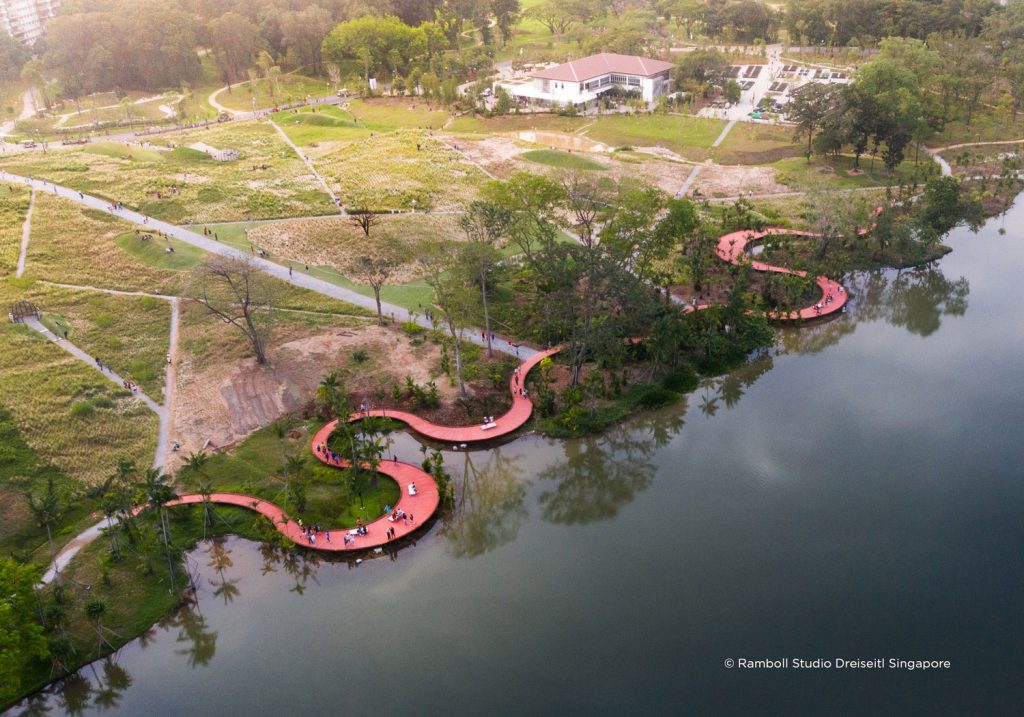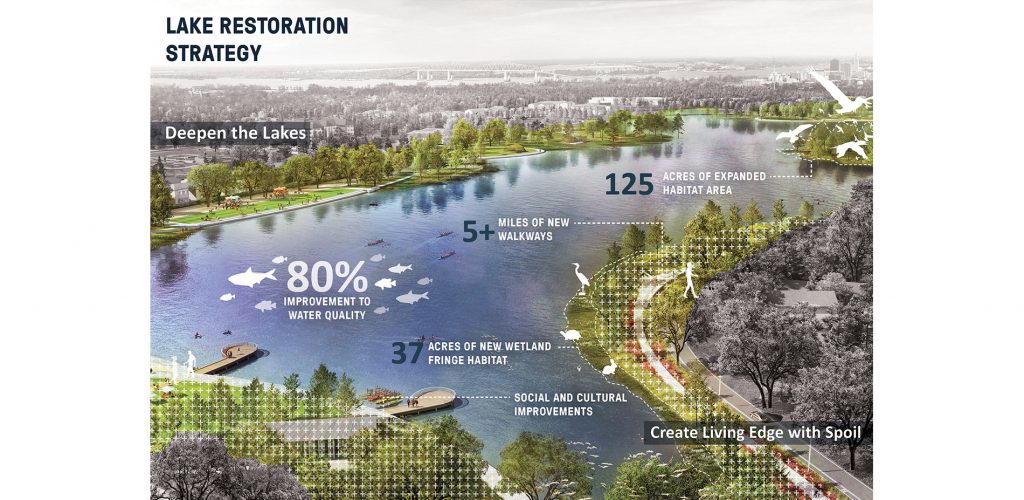Lentic ecosystems is a term encompassing a range of slow or still waters and includes waterbodies such as lakes, reservoirs, ponds, swamps, and marshes.1
[1] Marsh and Fairbridge, “Lentic and Lotic Ecosystems.”
What role do lentic ecosystems play in their environment?
Lakes are formed by the filling of geological depressions or the containment of water by dams. Characteristics such as the depth, shape, and shoreline of lakes help to determine the hydrology and biology of their respective ecosystems.1 They are important ecosystems as they provide many services including the provision of drinking water, irrigation supply, flood control, hydropower, transportation, biodiversity conservation, recreation, and aesthetics.2 Marshes, however, go through cycles of flooding and drying, and inland marshes specifically can be characterized by their emergent vegetation, grasses, rushes, and sedges.3 Further information about marshes can be found under wetlands.
[1] Suring, “Lentic Freshwater.”
[2] Jørgensen, “Freshwater Lakes.”
[3] Craft, “Inland Marshes.”
What are the (anthropogenic) impacts on these waterbodies?
Lakes and ponds
Anthropogenic activity around lakes causes various concerns, particularly surrounding water quality. Eutrophication is a primary concern of lake health as wastewater, industrial or agricultural drainage, and/or runoff causes the inflow of excess nutrients into lakes, ultimately damaging the lake’s ecosystem through the impact on oxygen levels and subsequently the aquatic species affected by the chemical change. Runoff and wastewater also have the potential to transfer pathogens into the lakes, thus impacting the safe consumption of lake water. Another impact on lakes is large changes in water levels caused by the diversion of incoming water or by the removal or use of large quantities of water from these waterbodies. Changes in water level have the potential to trigger other processes such as eutrophication or salinization, or impact the ecosystem in other ways, for instance, through the reduction of fish spawning habitat caused by siltation.1 Additional impacts include fishing, noise and light pollution, and the introduction of invasive species.2 Ultimately, it’s important to understand that activities associated with lakes and ponds, and those upland of these waterbodies, will have an impact on the water quality and therefore need to be properly managed to minimize disruptions to these ecosystems.
[1] Jørgensen, “Freshwater Lakes.”
[2] Strecker, McGrew, and Chiapella, “Lake and Pond Ecosystems.”
What are the design considerations for lentic ecosystems?
In lakes and reservoirs where the water has been negatively impacted, restoration processes can be implemented to help bring back the natural potential of the waterbody. The primary methods of lake restoration include the removal of contaminants, the reduction/prevention of agricultural runoff and wastewater from entering to prevent processes such as eutrophication, and the overall improvement of water quality and aquatic ecosystems. Methods of lake restoration should be carried out at a watershed scale as water is interconnected in its different forms throughout the water cycle.1
[1] Dhir, “Wetland, Watershed, and Lake Restoration.”
Sources
Craft, Christopher. “Inland Marshes.” In Creating and Restoring Wetlands, 117–61. Elsevier, 2022. https://doi.org/10.1016/B978-0-12-823981-0.00014-9.
Dhir, Bhupinder. “Wetland, Watershed, and Lake Restoration.” In Handbook of Ecological and Ecosystem Engineering, edited by Majeti Narasimha Vara Prasad, 1st ed., 247–59. Wiley, 2021. https://doi.org/10.1002/9781119678595.ch13.
Jørgensen, Sven E. “Freshwater Lakes.” In Encyclopedia of Ecology, 509–13. Elsevier, 2008. https://doi.org/10.1016/B978-0-444-63768-0.00339-5.
Marsh, G. Alex, and Rhodes W. Fairbridge. “Lentic and Lotic Ecosystems.” In Environmental Geology, 381–88. Encyclopedia of Earth Science. Dordrecht: Kluwer Academic Publishers, 1999. https://doi.org/10.1007/1-4020-4494-1_204.
Strecker, Angela L., Alicia McGrew, and Ariana Chiapella. “Lake and Pond Ecosystems.” In Reference Module in Life Sciences, B9780128225622000700. Elsevier, 2022. https://doi.org/10.1016/B978-0-12-822562-2.00070-0.
Suring, Lowell H. “Lentic Freshwater: Lakes.” In Encyclopedia of the World’s Biomes, 121–30. Elsevier, 2020. https://doi.org/10.1016/B978-0-12-409548-9.12074-3.
Additional Resources
Precedents
Lakeside Garden: Henning Larsen
Location: Singapore

“Identified as the first phase of development of Jurong Lake Gardens, Singapore’s third national garden and the first in the heartlands, Lakeside Garden is a 53-hecare site that looks to restore the landscape heritage of the freshwater swamp forest as a canvas for recreation and community activities. The development is envisioned to be a “people’s garden” accessible to all segments of the community and is a conscious effort to bring back the nature that was once unique to the area.”
This project can be accessed on Landezine and the firm’s website.
Baton Rouge Lakes: SWA Group and CARBO Landscape Architecture
Location: Baton Rouge, USA

“The Baton Rouge Lakes project recognizes opportunity in crisis. The 275 acre lakes system is a series of six lakes in central Baton Rouge…Based on sound ecological underpinnings, the Lakes Master Plan uses restoration techniques and nature as a catalyst for healthy living where man and water exist in equilibrium.”
This project can be viewed through ASLA and through SWA’s website.
